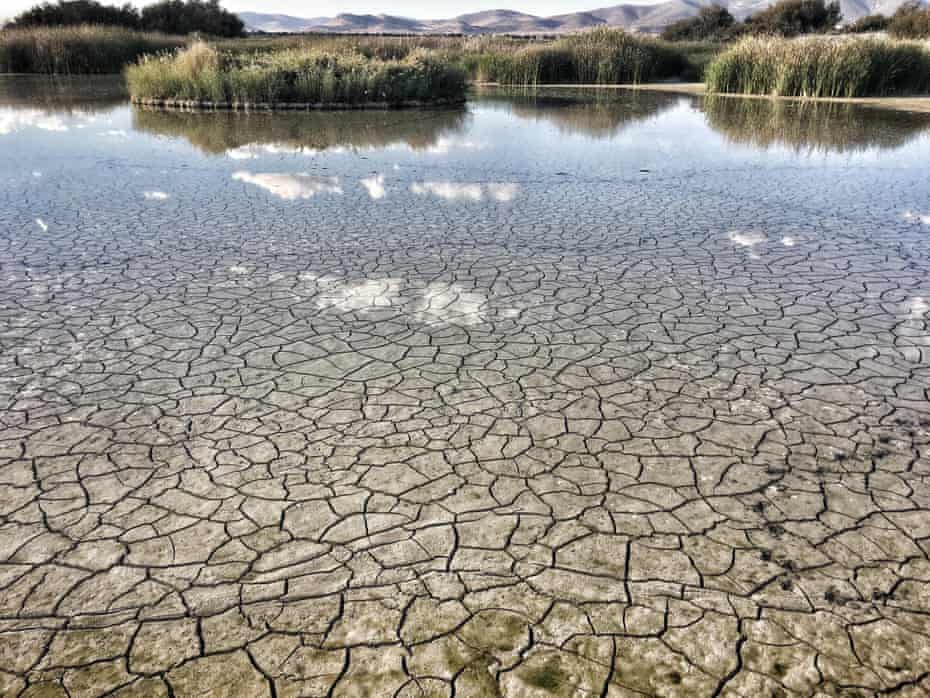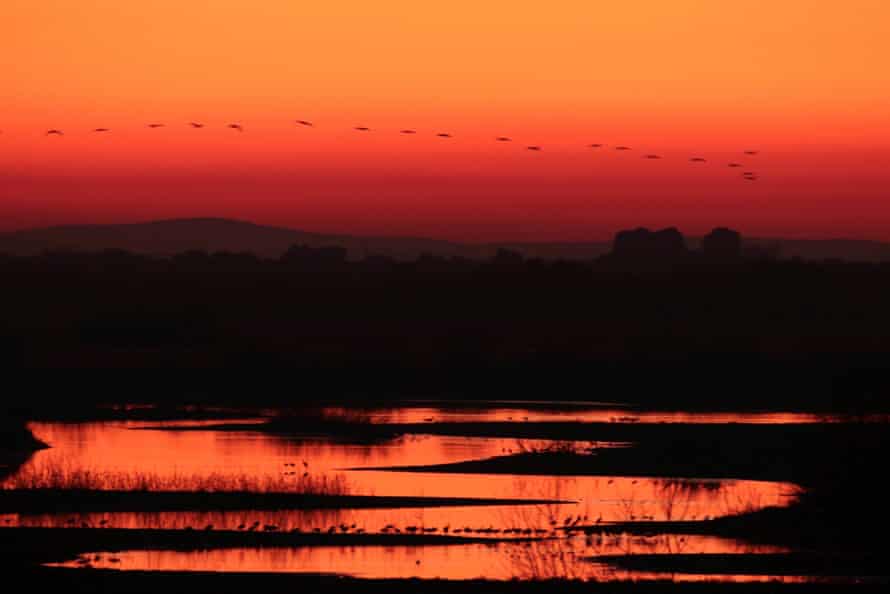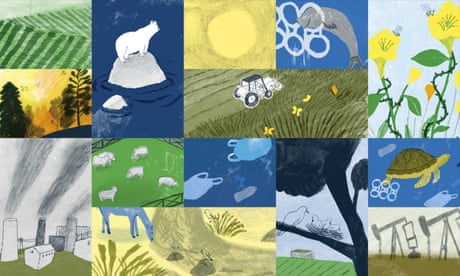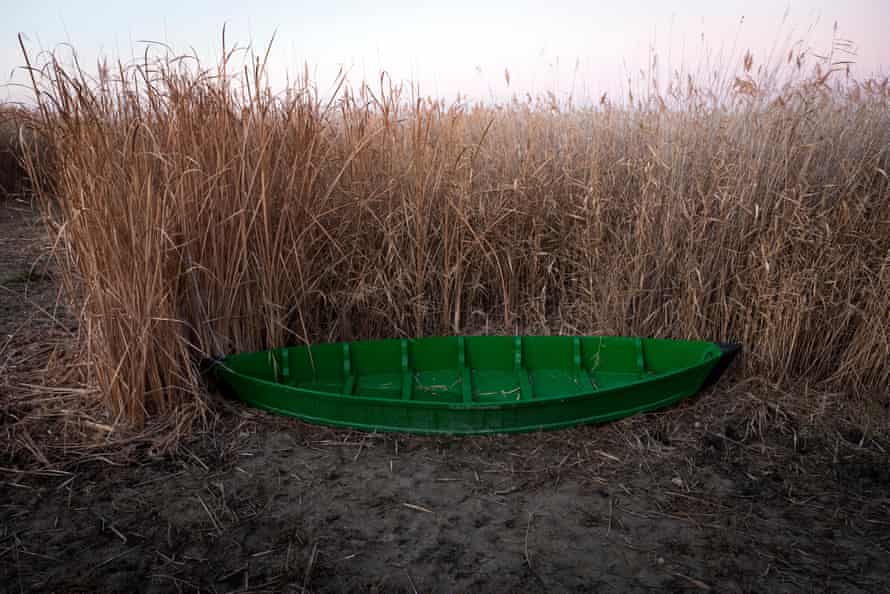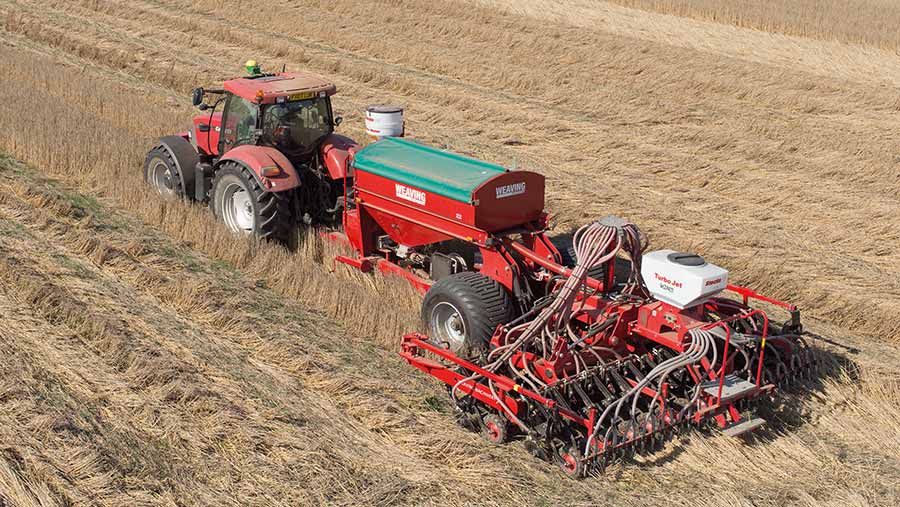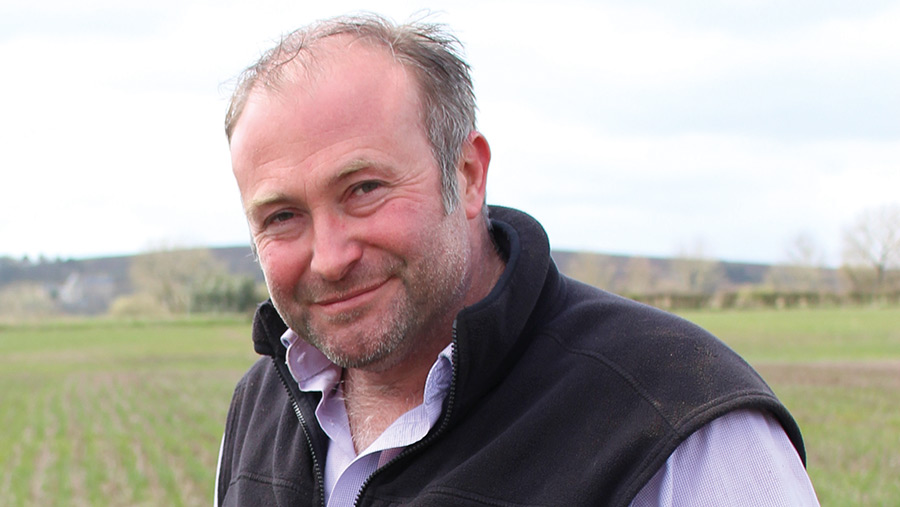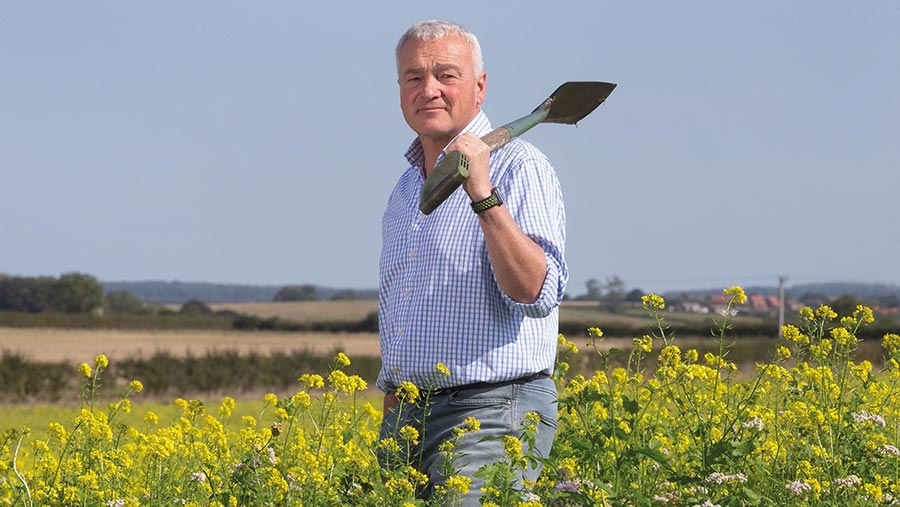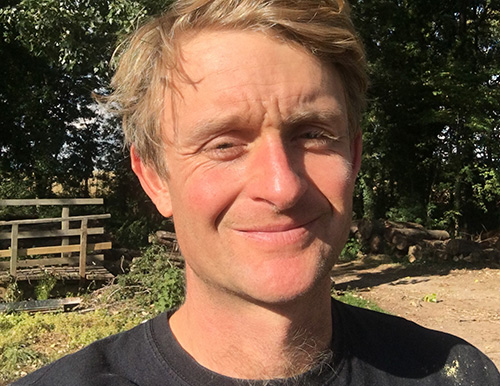Agritech is touted as a remedy for the perennial problems ailing the Indian farmer. But what about the challenges it might create?
Karishma Mehrotra
Yesterday ·
 Amit Dave/Reuters
Amit Dave/ReutersRamanjaneyulu GV seethes with disdain remembering the times agricultural technology start-ups pitched to him over the past eight years. On offer was the full rainbow of services: market solutions and weather predictions for higher agricultural yield, better quality produce, more profits. Everything that, in theory, should be welcome.
“My opposition was not to the technology – my opposition was to the approach,” said the agricultural scientist who heads the Centre for Sustainable Agriculture, a Hyderabad institute that teaches organic farming to cooperatives of 25,000 farmers in Andhra Pradesh, Telangana and Maharashtra.
What irked Ramanjaneyulu was the start-ups’ appetite for data. “They see that a major area of new control is in data,” he said. Ramanjaneyulu feared that the start-ups would give precedence to bottom lines over farmers’ interests – a fear that grew as those start-ups were bought by larger technology companies.
Galvanised by what he considered a disconcerting trend, Ramanjaneyulu set out to create his own solutions. So, four years ago, his Centre for Sustainable Agriculture made a weather advisory application, an online marketplace, a pest-and-disease surveillance app, a manufacturing inventory app and a quality management app – all integrated on a backend database of farmers.
This October, at the three-storey institute, close to labs for testing soil samples and an organic store, employees were hunched over their laptops, remotely training farmers around the country. In an adjacent office, lead certification analyst Chandrakala Pakki watched field operators feed in seasonal crop data.
On her screen was Rama Devi Challa, the field operator in charge of the Vijayanagaram cooperative. Challa gave Pakki a virtual tour of a farm and then pointed the camera at Yedla Krishna, a farmer she was collecting data from. Krishna read out information about crop yield, irrigation amounts and pre- and post-harvest facilities from his Sendriya Rythu Diary (a record book), as Challa duly fed it into a mobile app.

Back in the Hyderabad office, Pakki analysed the incoming data in a 40-column spreadsheet. The information was transferred by her team into a dashboard that integrates all the databases under a farmer group ID and QR code. Eventually, this consolidated picture will be used to certify organic foods, track supply for the market, and maintain traceability for the buyers.
“If we don’t build these databases, somebody else will and they will be in control of us,” said Ramanjaneyulu. “We need to come up with indigenous solutions. Saying that there should not be a Microsoft or Google won’t work. Even if they are there, how do we protect ourselves?”
The question has become central in the world of agricultural technology, or agritech in short, as the Union Agriculture Ministry finalises India’s first major governmental push in digital agriculture – AgriStack.
Formerly called India Digital Ecosystem Architecture, or IDEA, the AgriStack initiative is a “collection of technologies and digital databases” that will be used by the government to provide each farmer with a unique ID linked to their Aadhaar number. The initiative is set to be finalised in November by committees set up by the Agriculture Ministry and is awaiting the agriculture minister’s approval.
To build the database, the ministry is tapping into the prized data of 11.5 crore landholding farmers collected under the PM-KISAN programme. This will be integrated with other sets of data from initiatives like Faisal Bhima Yojana (a crop insurance scheme), the Soil Health Card, and satellite imagery from the Mahalanobis National Crop Forecast Centre.
Eventually, if each farmer ID is linked, the database will be like the Unified Payments Interface system. Both private and public players will be able to tap into it for government schemes and corporate services.

“The complete picture of this jigsaw puzzle is that once we have the data collected and validated... [it will] give us a pathway to bring digital technologies to the farmer,” said Vivek Aggarwal, the additional secretary at Agriculture Ministry who jumpstarted its digital agriculture division and has led the AgriStack project since the beginning.
The way the government envisions it, AgriStack will enable direct benefit transfers, assist in yield forecasting and price discovery, and maybe even address pest infestation and crop wastage. The government says the project will help “in effective planning towards increasing the income of farmers in particular and improving the efficiency of the Agriculture sector as a whole”.
The stakes are high. Agriculture remains one of the largest employers in India. Seventy per cent of its rural households still depend primarily on agriculture for their livelihood, according to the Food and Agriculture Organization. Of these millions, 86% are still small and marginal farmers, owning or cultivating less than five acres of land. In a day, an average farm household earns just ₹277, an abysmally low figure.
Prime Minister Narendra Modi’s promise to double farmer income by 2022, incredibly ambitious to start with, could have probably been more feasible with corporate participation. But with the government forcing through three controversial farm laws, leading to protracted protests and farmer anger, the AgriStack initiative is viewed by many with cynicism.
“One must not approach problems through the perspective of only technology but rather a perspective where farmers identify the problems. It may be that not all the solutions are rooted in technology,” read a letter sent to the Agriculture Ministry by the Alliance for Sustainable and Holistic Agriculture. The letter was signed by nearly 100 agricultural or technology-related organisations.
Ramanjaneyulu shares a similar view. It’s not a question of no technology or all technology, he says. “My question is, will this be good for the farmer, or will it be market exploitation? Will this be useful for the people or just for the companies?”
Muddled Data
Agricultural technology, or agritech, is seen by its champions as a means of addressing food scarcity and buttressing climate resistance by minimising costs and resources. There are usually four types of agritech: 1. online marketplaces (which remain the dominant category); 2. financial tech with loan and insurance offerings; 3. precision technology with sensors or satellite imagery for analysing crops; and 4. information and advisories.
In 2019, India’s agritech market size was $204 million, with roughly 50 start-ups receiving private funding annually, according to Ernst & Young. The sector still gets a lot of fanfare and sufficient investments. But, as Ernst & Young and others have noted, the space is still small, capturing merely 1% of the total market potential.
“The start-ups have the technology... but one of the biggest struggles has been data,” said Purushottam Kaushik, who helped the Agriculture Ministry draft the AgriStack policy document. Much of the agricultural data in India, he explained, is messy or inaccurate, often based on paperwork that is disputed or in different languages.
Unless this fundamental land records problem is addressed, the agritech sector cannot move forward, experts say. “If the government wants to prioritise AgriStack, the most important layer is not the farmer ID – it’s digitizing the land records,” said Mark Kahn, a well-known agritech investor who has worked in India for over a decade.
Still, whatever data the government does have is “hugely valuable” and the private sector has its eye on it. “If you talk to companies like CropIn [a farm analytics firm] and SatSure [a satellite technology firm], they invest a lot of resources just to capture the data,” said Kaushik, who has worked with Karnataka and Telangana governments on building initiatives like AgriStack.
Missing Safeguards
In the past year, the Agriculture Ministry has signed at least nine memorandums of understanding with companies like Amazon Web Services, Patanjali, Microsoft, Cisco and Jio to “prove the concept” of AgriStack in a set of districts or villages, said Aggarwal. “They are drawing on the database, validating the data with farmers on the ground, taking their consent, and onboarding their apps [to the farmers’ devices] to complete the solutions,” he added.
For one of the projects, the government provided AgriBazaar, a private online marketplace for agri-commodities, the land records of a block in Madhya Pradesh’s Guna district. Left on its own, the company would have taken five months to scrape this information from public databases, says AgriBazaar’s Head of Institutional Business Atul Chhura. Once this hurdle was overcome, AgriBazaar’s field staff began gathering further data from farmers about their farms, said Chhura. Next on their to-do list is the task of triangulating the information with satellite imagery and onboarding local government officials to use this data and provide advisories.
This writer spoke to several farm leaders and farmers in Guna to gauge their response to the AgriBazaar project. None said they were being surveyed.
Varun Pratham Singh, the head of a Krishi Vigyan Kendra in Guna, is sceptical of some agritech ideas, although no one has come to his area to sell solutions. He says he runs at least nine WhatsApp groups through which he distributes advisories almost every day to farmers in his tehsil. “They all use WhatsApp, but no one sells or buys anything online,” he said. “That won’t work in villages – they aren’t high-tech enough and no one would go that far to sell to them anyway.”
Away from the villages, the pilot projects have raised eyebrows, even within the agritech world. “I would question them a little: why Jio?” asked Kahn. “Why are these pilots going to the largest companies in India? This is a question of corporatism as opposed to capitalism.”

Even some of those who helped develop the AgriStack blueprint express concerns. “My personal views were that signing these MoUs was not the idea in the way it was planned,” said Abhishek Singh, CEO of the National e-Governance Division in the IT Ministry and the head of one of four AgriStack committees. “It should have been more like the National Digital Health Mission... Anyone who wants to build the solution is welcome.”
Critics have other questions. Why were farmer organisations left out of the drafting of the initiative? What happens to farmers who, for some reason, get excluded from the database? Who will ensure that farmer data is not used for land acquisition or exploited for insurance and loans by private companies?
Growth Story
Answers to these queries may be a long time coming. Until then, there is no denying that farmers are no longer just producers of food but, increasingly, data.
ADVERTISEMENT
Fasal is an agritech company in Bengaluru that uses sensors to measure crop conditions and advise farmers on irrigation, fertilisers, disease control and more. It boasts that its two-metre white sensor can be installed in the soil by farmers themselves, without any assistance. Another source of pride for it is that while the India Meteorological Department has roughly 75,000 weather stations across the country, Fasal has as many in just four Maharashtra districts.
“We eventually want to primarily become a data company,” said Fasal founder Ananda Verma, who hails from a farming family.

At the moment, the company has 2,000 farmer subscribers covering 50,000 acres. “We know what these farmers are growing, what they have done on their farm, and what kind of quality they are going to get,” said Verma. Each farmer is currently charged a monthly subscription of up to Rs 750. But once the company gathers enough data and monetises it through a data platform shared with product or insurance companies, Verma says, the subscription fee may be waived.
“With the kind of visibility we have, there will be a point someday when Fasal will be able to tell Monsanto that Nashik will require a particular chemical because there is a disease build-up,” Verma pronounced.
Undoubtedly, data lends itself to economies of scale. “Even if agricultural data are ‘open’, farmers are not necessarily equipped to conduct the right sort of analysis that can add any value,” writes Alistair Fraser, a Lecturer in the Department of Geography at Ireland’s Maynooth University. Besides, the isolated data individual farmers might have is not as valuable as a large collection of data points.
Fraser predicts “a landscape in which farmers submit data, even via open toolkits, that only the largest firms will be able to use effectively.” He told this writer that he was particularly concerned about how data projects could increase average plot sizes in the Global South, reducing the number of food producers.
Nachiket Udupa, a member of the steering committee of the Alliance for Sustainable and Holistic Agriculture, links AgriStack to the broader arc of the controversial farm laws, one of which allows farmers to sell outside Agricultural Produce Market Committee mandis. “It all stems from the same mindset,” Udupa said. By deregulating agricultural markets and allowing contract farming, any government could enable an e-commerce website to control the market, he says. The result would be similar to how ride-hailing apps lured drivers with attractive rates, only to change the contracts later, says the letter to the Agriculture Ministry from the Alliance for Sustainable and Holistic Agriculture.
Some of those in favour of AgriStack find this conjecture dubious. Hemendra Mathur, a venture capitalist who heads FICCI’s agritech taskforce, says the Global North’s large-scale agriculture is inherently different from India’s small farms – and that is unlikely to change. “In this sector, I’m 100% confident you won’t see an Amazon or Flipkart or Byju’s or OYO,” he said. “You will see hundreds of thousands of winners.”

Besides, AgriStack supporters argue, does the farmer even care? “The Indian farmer is different from the Western farmer – at the end of the day, they just want to make money,” claimed Verma. “They are ready to provide the data and they aren’t concerned if it’s taken by Monsanto.
Support for this view comes from Ajit Korde, a farmer in Maharashtra’s Satara district who owns a 70-acre tomato farm. In April, Korde paid Rs 50,000 for Fasal’s scanner that came with a free year-long subscription. Using the scanner has reduced his water consumption by 30%. “The algorithm remains in the background,” he said. “The application gives information – how much water to give, what disease is there. It helps make decisions, but the cost is a lot. The average farmer cannot afford this.”
Karishma Mehrotra is an independent journalist. She is a Kalpalata Fellow for Technology Writings for 2021.


